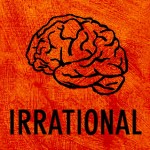 Most games developed in our lab are self-contained and completed within one year. However, one project is too large for any one student to complete, and thus several students will develop the game in stages over a period of years.
Most games developed in our lab are self-contained and completed within one year. However, one project is too large for any one student to complete, and thus several students will develop the game in stages over a period of years.
The game is designed to introduce students to cognitive biases and then eventually develop simulators that train students to avoid their own bias. There are over 100 recognized cognitive biases in the psychology literature. Most of the biases fit neatly into one of several categories (e.g., social biases, memory biases, and decision making biases). The first iteration of our game was designed to introduce students to a small number of biases. Students observed two non-player characters in conversation and then decided which cognitive bias was made during the conversation. Students performed well, but the game was visually primitive and felt like a multiple-choice test.
Our initial success with the cognitive bias game motivated us to expand our learning objectives. We wanted students to go beyond mere exposure and actually practice making unbiased judgments. To meet this objective, it was clear that we were going to have to develop an immersive 3D environment. We wanted to place students in a more realistic social environment where they get to choose which friends to keep based on the nature of their conversations. Players are rewarded for keeping friends who make statements that are free from bias. Simultaneously, keeping a biased friend makes it difficult to complete tasks in the game because they are constantly feeding you misinformation.
Correctly identifying cognitive biases will lead to fewer obstacles for the player and a clear path toward completing game objectives.
We also wanted to establish a relationship between the game environment and player performance. If players perform poorly, the environment will become visually skewed and warped, making it more difficult to complete game objectives. Correctly identifying cognitive biases will lead to fewer obstacles for the player and a clear path toward completing game objectives. The project abstract follows:
“A vast amount of information bombards our senses, and selective attention must be used to filter out information that is not behaviorally relevant. Similarly, heuristics are cognitive short cuts that allow us to make decisions quickly. Heuristics prevent us from being mired in deliberations that would halt everyday progress. However, the use of such short cuts is automatic and comes at a price. Cognitive Biases are untoward effects created by using heuristics. Cognitive psychologists have identified over 100 such biases. For example, the “confirmation bias” occurs when an observer forms opinions based only on affirmations of their schema, as opposed to evidence that falsifies their schema. College freshmen are at-risk for making poor decisions that could impact their academic careers as well as their professional careers. Consequently, we set out to create a game where students could learn about cognitive biases and practice avoiding errors in decision making. Game-based learning is particularly effective when students need to practice a skill again and again. Our game allows students to practice making judgments in the presence of false statements. Players observe non-player characters (NPCs) interacting in a game world. Several of the NPCs engage in conversation, and one of the characters makes statements that reveal a cognitive bias. The player must identify the NPC making the error and label the cognitive bias in order to win valuable resources. Performance on a post-game assessment of decision making is predicted to be better for students who played our game relative to those who learned about cognitive biases from text-based sources.”


